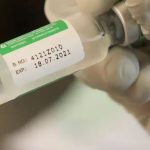Scientists have invented a breakthrough spinal cord implant which could enable paralysed people to walk again.
Laboratory tests on paralysed mice had an 80% success rate in restoring their ability to walk using 3D implants from human cells.
The scientists transformed patients’ tissue samples into functioning spinal cord implants through a process similar to the development of the spinal cord in human embryos.
Over the next few years, the researchers hope to be able to create personalised implants to repair body tissue damaged by injury that doesn’t carry any risk of being rejected by the patient’s body.
Clinical trials in humans have not yet begun, although the team hopes that they will be able to implant the engineered tissue into paralysed people to enable them to stand and walk again.
Professor Tal Dvir, who led the research at the Sagol Centre for Regenerative Biotechnology at Tel Aviv University, said: “The model animals underwent a rapid rehabilitation process, at the end of which they could walk quite well.
“This is the first instance in the world in which implanted engineered human tissues have generated recovery in an animal model for long-term chronic paralysis – which is the most relevant model for paralysis treatments in humans.
Amnesty International accuses Israel of imposing ‘apartheid’ on Palestinians
Israeli president urges more countries to join Abraham Accords during visit to United Arab Emirates
Israeli president to continue UAE state visit despite Houthi ballistic missile
“There are millions of people around the world who are paralysed due to spinal injury, and there is still no effective treatment for their condition.
“Individuals injured at a very young age are destined to sit in a wheelchair for the rest of their lives, bearing all the social, financial, and health-related costs of paralysis.
“Our goal is to produce personalised spinal cord implants for every paralysed person, enabling regeneration of the damaged tissue with no risk of rejection.”
How does the technology work?
Professor Dvir explained how the technology was based on taking a small biopsy of belly fat tissue from the patient, which was then reprogrammed using genetic engineering to return to a state resembling embryonic stem cells.
He added that the team expected relatively rapid approval of the technology one they reached the stage of clinical trials with humans over the next few years.
The 3D implants, made using human cells, had an 80% success rate in restoring the ability to walk in paralysed mice in the laboratory, researchers said.
Tissue samples from patients are transformed into functioning spinal cord implants through a process that mimics the development of the spinal cord in human embryos.
What happens next?
Over time, the scientists plan to be able to create personalised implants to repair tissue damaged from injury, and without the risk of rejection by the body.
They are preparing for clinical trials in humans and hope that in the coming years the engineered tissues will be implanted into paralysed people, enabling them to stand up and walk again.
Prof Dvir explained that the technology is based on taking a small biopsy of belly fat tissue from the patient.
The researchers used genetic engineering to reprogramme the cells and return them to a state that resembles embryonic stem cells – the cells capable of becoming any type of cell in the body.
Prof Dvir said researchers have good reason to expect relatively rapid approval of the technology.
The research has been published in the journal Advanced Science.






















